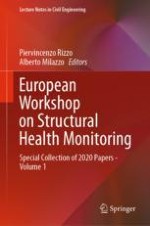This volume gathers the latest advances, innovations, and applications in the field of structural health monitoring (SHM) and more broadly in the fields of smart materials and intelligent systems. The volume covers highly diverse topics, including signal processing, smart sensors, autonomous systems, remote sensing and support, UAV platforms for SHM, Internet of Things, Industry 4.0, and SHM for civil structures and infrastructures. The contributions, which are published after a rigorous international peer-review process, highlight numerous exciting ideas that will spur novel research directions and foster multidisciplinary collaboration among different specialists. The contents of this volume reflect the outcomes of the activities of EWSHM (European Workshop on Structural Health Monitoring) in 2020.
